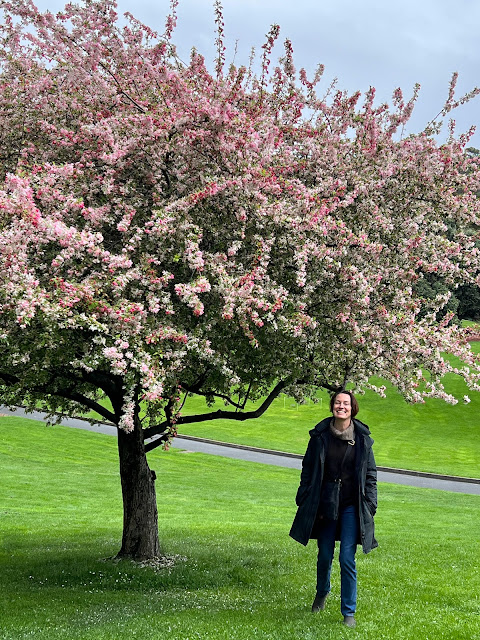The green shoots ...
There is s toxic legacy in UK politics associated with the two words “green shoots”. The origin of this legend dates back to 1991 when the then Chancellor of the Exchequer, Norman Lamont, said “The green shoots of economic spring are appearing once again.” Unfortunately for him, the UK remained stuck in recession for some time afterwards. Numerous other politicians have subsequently made the same claim only to suffer the same disappointment and the term has become synonymous with political incompetence. Of course, the 1990s also coincided with the golden era of Australian cricket. The green shoots of recovery were often sighted in English teams, but alas for English sport they proved as elusive in cricket as they are in politics.
Unfortunately, just recently we are finding ourselves in a green shoots phase on the farm. There are lots of new beginnings but, frustratingly, very few are developing as quickly as we would like. In the garden, the ornamental crab apple (malus floribunda) is putting on a wonderful show at the moment, but elsewhere there is only the promise of better things to come. In particular, all our other show trees are stubbornly refusing to show any real spring-like action. Furthermore, our ornamental pear trees (pyrus calleryana) are not behaving at all like they are supposed to. Instead of losing all their leaves in blaze of autumn colour and breaking out into a sea of white blossom in spring, they have kept most of their leaves over winter and are only shedding last year’s foliage now that new leaves are forming. As a consequence, the effect of the white blossom is significantly reduced.
Perhaps most frustrating is the slow progress our new olive grove. Having finished the project to enlarge our outdoor dining area we started on mapping out the area just up the hill from the domestic orchard as the site of an olive grove. We then went out and bought 15 olive trees to celebrate our 32nd wedding anniversary.
Buying the trees proved to be the easy part. Before even thinking about planting the trees, the first priority remained fencing in order to protect the olives and indeed the rest of the garden from local fauna. To this end, we dug some holes for fence posts and bought the necessary raw materials to complete the job. At that stage we were undone by rain – lots of rain. The holes we so assiduously carved out of rock and clay simply filled with water putting a stop to all fencing. Undaunted we changed tack and focussed on the olives. Cath devised a beautifully simple way to lay out the trees using an equilateral triangle with 3m sides constructed of string with small wire hoops at the vertices. The hoops would then go over two starting stakes and then pulling the string taught would immediately mark out the position of the third stake. In this way the entire grove of 15 trees was mapped out in minutes.
Buoyed but this success we started digging the area around the stakes. To say the ground was full of rocks would be the understatement of the century. Progress was slow and backbreaking. To make matters worse, while using a metal crowbar to move a particularly large specimen, I slipped and banged my ribs on the crowbar. This led to a week of being unable to sleep on my right side and generally incapably of anything remotely approximating hard labour. It seems, though, that in this neck of the woods ribs heal quicker than fence post holes drain – I am back to work but the holes remain saturated. No green shoots here!
To ease our frustration, last weekend we left the farm and did a fantastic walk, the South Cape Bay Track (https://parks.tas.gov.au/explore-our-parks/southwest-national-park/south-cape-bay) To access the start of the track you have to drive as far south as you can in Australia (just over an hour from the farm) to Cockle Creek. The walk is a 16km round trip that takes you to the coast overlooking the Great Southern Ocean and back again. The booming sound made by the ocean is quite awe inspiring, as is the recognition that there is nothing left between you and Antarctica! The most mystical experience of all, however, stems from the fact that this area is part of the World Heritage Wilderness Area in Southwest Tasmania whose shoreline remains as it was long before it was first mapped by the explorer Bruny D'Entrecasteaux in about 1792.
The walk was an exhilarating but brief reprieve from the rocks and the mud in the olive grove. Now it's back to work and my ribs are aching simply thinking about it …








Comments
Post a Comment